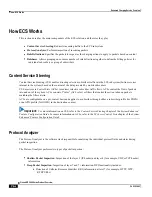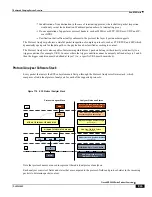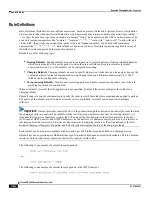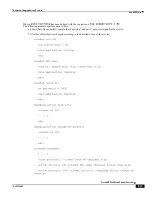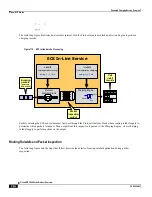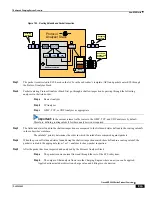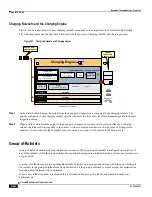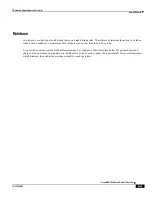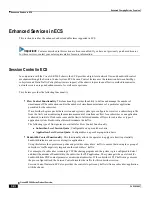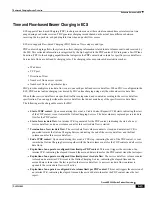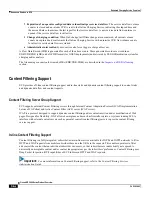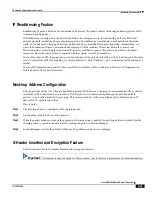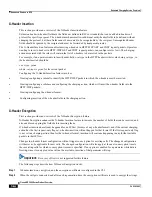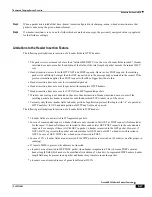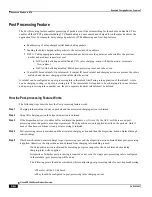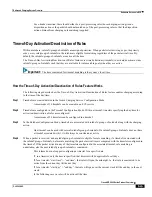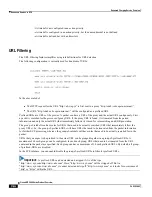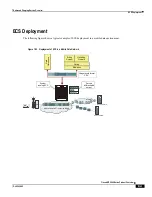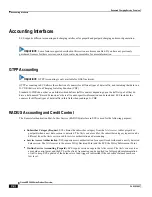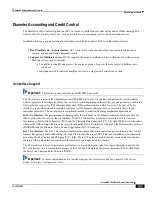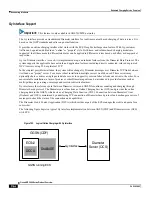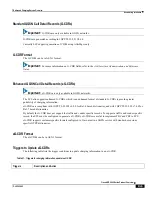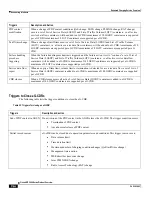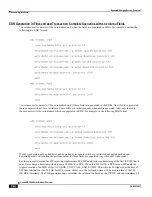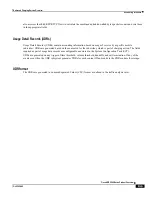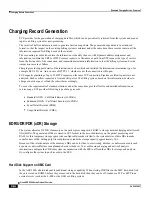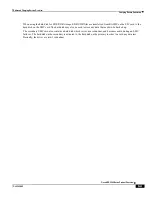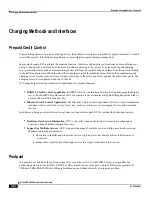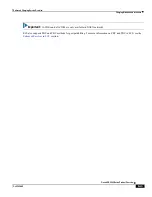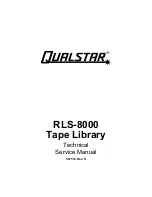
Enhanced Charging Service Overview
▀ Enhanced Services in ECS
▄ Cisco ASR 5000 Series Product Overview
OL-22938-02
Post Processing Feature
The Post Processing feature enables processing of packets even if the rule matching for them has been disabled. This
enables all the IP/TCP packets including TCP handshaking to be accounted and charged for in the same bucket as the
application flow. For example, delay-charged packets for IP Readdressing and Next-hop features.
Readdressing of delay-charged initial hand-shaking packets.
Sending the delay-charged initial packets to the correct next-hop address.
DCCA: Taking appropriate action on retransmitted packets in case the quota was exhausted for the previous
packet and a redirect request was sent.
DCCA with buffering enabled: Match CCA rules, charging-action will decide action—terminate
flow/redirect
DCCA with buffering disabled: Match post-processing rules, and take action
Content ID based ruledefs: On rule match, if content ID based ruledef and charging action are present, the rule is
matched, and the new charging action will decide the action
A ruledef can be configured as a post-processing rule in the ruledef itself using rule-application of the ruledef. A rule
can be charging, routing, or a post-processing rule. If the same ruledef is required to be a charging rule in one rulebase
and a post-processing rule in another one, then two separate identical ruledefs must be defined.
How the Post-processing Feature Works
The following steps describe how the Post-processing feature works:
Step 1
Charging rule-matching is done on packets and the associated charging-action is obtained.
Step 2
Using this charging-action the disposition-action is obtained.
Step 3
If the disposition action is to either buffer or discard the packets, or if it is set by the ACF, or if there are no post-
processing rules, the packets are not post processed. The disposition action is applied directly on the packets. Only if
none of the above conditions is true, post processing is initiated.
Step 4
Post-processing rules are matched and the associated charging-action and then the disposition-action obtained through
control-charge.
Step 5
If both match-rule and control-charge for post processing succeed, the disposition-action obtained from post-processing
is applied. Otherwise, the disposition-action obtained from charging rule-matching is used.
If no disposition action is obtained by matching post-processing rules, the one obtained by matching
charging-rules will be applied.
Irrespective of whether post processing is required or not, even if a single post-processing rule is configured
in the rulebase, post processing will be done.
The following points should be considered while configuring post-processing rules for next-hop/readdressing.
The rules will be L3/L4 based.
They should be configured in post-processing rules' charging actions.
Summary of Contents for ASR 5000 Series
Page 1: ......
Page 26: ......
Page 48: ...New In Release 10 0 SCM Features Cisco ASR 5000 Series Product Overview OL 22938 02 ...
Page 50: ......
Page 58: ......
Page 68: ......
Page 126: ......
Page 138: ......
Page 146: ......
Page 218: ......
Page 236: ......
Page 356: ......
Page 374: ......
Page 422: ......
Page 496: ......
Page 572: ......
Page 654: ......
Page 700: ......
Page 726: ......
Page 784: ......
Page 816: ......
Page 844: ......
Page 906: ......
Page 926: ......
Page 942: ......
Page 943: ...Cisco ASR 5000 Series Product Overview OL 22938 02 Chapter 30 Technical Specifications ...
Page 966: ......
Page 972: ......

